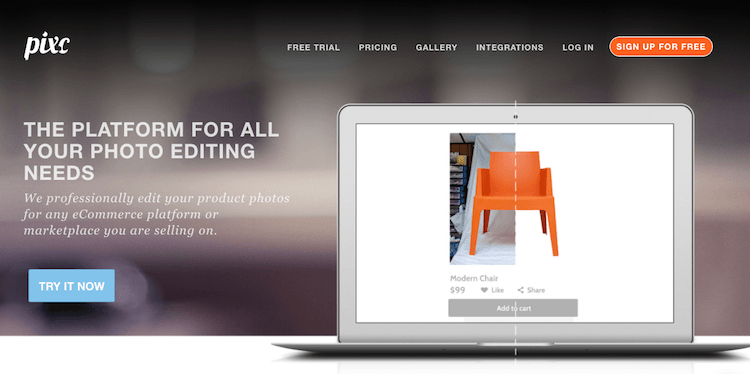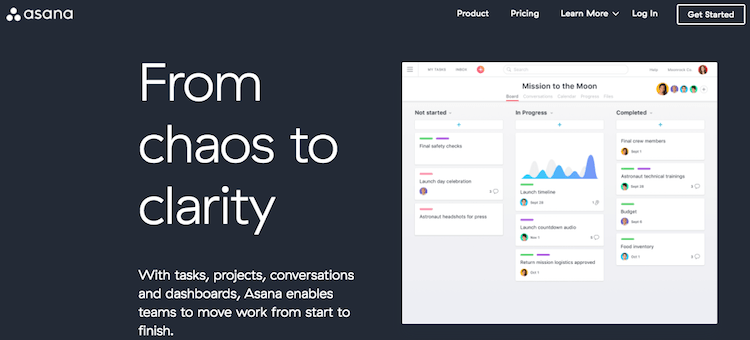

Quick Links
Quick Links

Source: Bench Accounting
One of the biggest pain points in scaling your business is becoming comfortable with delegating. The first steps towards finding virtual assistants (VAs), setting them up, and establishing responsibilities and regular communication are often the most difficult.
But after you go through it once, trust us, it becomes much easier. You are one step closer to building a group of reliable workers and automating your operation.
Hiring a VA is one of the quickest and most affordable ways to scale your eCommerce business. You can build a distributed, well-integrated group that performs just as well as in-house hires and boosts your productivity.
As your company begins to scale up, it is vital to learn to outsource routine tasks so you can focus on key growth initiatives.
The Importance of Delegating
When you first start your eCommerce store, you often wear many hats and are learning as you go. You build your store, find suppliers, and craft your marketing strategy vetting every single decision.
And, thankfully, a time comes when those initial tasks are no longer as difficult; they become routine. It is no longer challenging to list items, communicate with manufacturers, or take product images. The challenge instead comes from the sheer volume of all these tasks, which can make you feel stuck and overwhelmed because you cannot invest enough time and energy in strategic partnerships and key marketing integrations.
That is where automating with the help of skilled and vetted VAs comes in and frees your hands so you can take your store to the next level. But where do you even start?
You start by looking at what you can automate in an eCommerce business.
What Tasks to Automate
Make a list of all the tasks of running your online retail store that have grown mechanical and repetitive. Do a few edits of your list, and structure it starting with the tasks that take the bulk of your time.
For most eCommerce stores, the list of easily outsourced tasks will look something like this:
- Order fulfillment
- Inventory management
- Shipping labels’ purchasing and order tracking
- Customer service requests
- Product listing
- Returns and exchanges
- Taking product photos
- Product page SEO
- Blog post writing
- Social media posts
- Email campaigns
- PPC ad management
- Calendar management, including meetings and travel
- Personal tasks
- Website maintenance
For the tasks that are towards the top of the list, you might need a full-time VA. While as you go down, you can get away with part-time or even occasional help from a hired hand.
You can break down your tasks even further to ease the time needed for onboarding and ensure quality performance. For example, you can split your product photo creation into taking photos and post-processing. You can take the images in-house and then have a VA upload them in bulk to a service like Pixc for background removal or color correction.

Source: Pixc
Now that you have your list, evaluate your own needs, and group your tasks into full-time, part-time, and occasional. That way, you will be able to better match them to the right VA according to their skills and desired time commitment.
How to Efficiently Hire VAs
Start on a platform that focuses on remote workers with specific skill sets like Freeeup. This will save you a lot of time because you are accessing a pool of vetted and skilled VAs. All you have to do is submit a description of the tasks you’d like done.
Do not take the description lightly. The more time you invest in crafting it, the better the candidates you will attract. It will also ultimately save you more time from not having to sift through unfitting responses.
Here is a quick checklist of what to focus on in your worker request or task detail post:
- Concise, engaging, and to-the-point text.
- Key phrases that potential VAs might be searching for.
- Short tests to weed out poor candidates. For example, include a word like gummy bear, or a short math equation like 10-7=?, and ask them to include the answer in the first line of their responses. This will show you that they have read your full post and save you time in the culling.
- Language requirements.
- Hours and business volume.
- Platforms and apps you use.
- Specific tasks that you need to be performed.
- Prefered time zone for better communication.
In short, make every word in your post count so you only get responses from the candidates who best fit your needs.
Your next step is to make a short list of your best submissions and schedule a 10-minute interview with each prospect over Skype or Google Hangouts. Prepare 4-5 questions that will tell you about their skill set and values.
It is important to look not only for skills but values that will fit in your company culture.
Questions to ask:
- What tasks do they like to do?
- What do they want to learn?
- What are their weaknesses and strengths?
- Why should you hire them?
After the interview, give at least two candidates a trial task to test skills and punctuality. Hire the ones that pass this test for a two-week trial and begin onboarding them. It is best to enroll two VAs for a trial period because with remote workers, often even well-performing candidates can drop out a week or two after they start working.

Source: Zendesk
Onboard, Communicate and Build Relationships
Think of the tasks that you are automating, and plan how you are going to communicate your instructions ahead of time. Do not jot down instructions in a quick email, and expect the VA to know how to fill in the blanks. If you think it’s hard guessing what a boss wants in a regular job, think about how tricky it can be for a person to guess who doesn’t have the benefit of body language and water cooler conversation to glean additional context. Spend the time creating detailed manuals about how you want to get things done if you really want to maximize this relationship.
For example, if you are hiring a VA to handle your returns and exchanges, create a step-by-step guide to the procedure with the apps and logins needed to complete the task head to toe.
Your checklist for exchanging an item will look something like this:
- Receive and exchange ticket in Zendesk.
- Send email to customer that ticket has been received.
- Purchase and mail return label via Easypost.
- Notify customer that return label has been sent.
- Place an order for new item.
- Notify customer of new estimated delivery date.
- Void previous order.
- Send a feedback request after delivery.
If checklists and manuals are not enough to communicate your instructions, you have to use a more engaging medium. A great way to get them up to speed on specific apps and platforms is with video tutorials. You can find tutorials on YouTube or create your own easier than you’d think.
For example, one of the best ways is to record your screen while you are explaining how to use a specific tool. You can use screen recording tools like ScreenFlow or Camtasia.
To go into broader skills like SEO or social media posting, use free online resources like these:

Source: Wordstream
Don’t neglect the VAs just because you don’t see them in person on a daily basis. Keep communication with VAs regular to help them become an integral part of your company. This practice helps keep remote workers productive and motivated.
Your goal is to create a long-lasting relationship so you can build trust and delegate ever more important and complex tasks. That way, you will free up more time in your day and be able to invest it in strategic growth projects.
How to Structure
Do not think of VAs as part-time workers who are easily replaceable. They are just as valuable as your in-house hires, and you should make them an integral part of your work process and help them grow. Guide them, motivate them, and mentor them on how they should develop their skills and give them more responsibilities if they prove their worth.
Form long-term productive relationships, and the VAs will save you more time and bring more to the table as they learn how your eCommerce business operates. You can promote them from, say, writers to editors and have them do the hiring of entry-level writers. That way, you are delegating in deeper ways and building your company’s hierarchy.
The best editor can become the content and marketing strategist who runs all your ads, email, and social media and oversees editors and writers. The same goes for every other aspect of your eStore. You can build a network of VAs who run your business remotely while you manage your company via a few key leaders.

Source: Asana
Use Platforms and Apps That Improve Workflow
Communicating with a remote group of workers while growing your eStore is an art in itself and requires using the right tools. Here is a short list of some essential apps and platforms that can help you stay in touch, manage projects, and share files.
Slack – Communicate and collaborate on anything.
Asana – Build, assign, and track projects.
Trello – Create interactive to-do lists.
YouCanBook.Me – Schedule short meetings.
WhatsApp – Quick messages or calls on the go.
Skype – Make voice and video calls.
Google Hangouts – Video calls via your Google account.
Google Drive – Share files and collaborate on documents.
Dropbox – Share files of any size.
Conclusion
The road to automation may seem tedious, but it unravels and leads to great results once you commit to it. Start by hiring a VA, using the right tools, and offering structured onboarding. Results will follow.
If you need help getting your campaigns set up, sign up with FreeUp and submit a freelancer request to meet suitable candidates and make the hire.
Learn from the process, and build trust with VAs so you can delegate ever more tasks and seamlessly scale your operation.
.
 Rachel Jacobs is Head of Content and Partnerships at Pixc, a leading eCommerce
Rachel Jacobs is Head of Content and Partnerships at Pixc, a leading eCommerce
product optimization service. Pixc transforms average product photos into professional images, designed to increase conversions. A lover of all things content and growth, Rachel spends most of her time planning new content, fine-tuning growth strategies and tweaking email campaigns. Take advantage of Pixc’s free trial.

